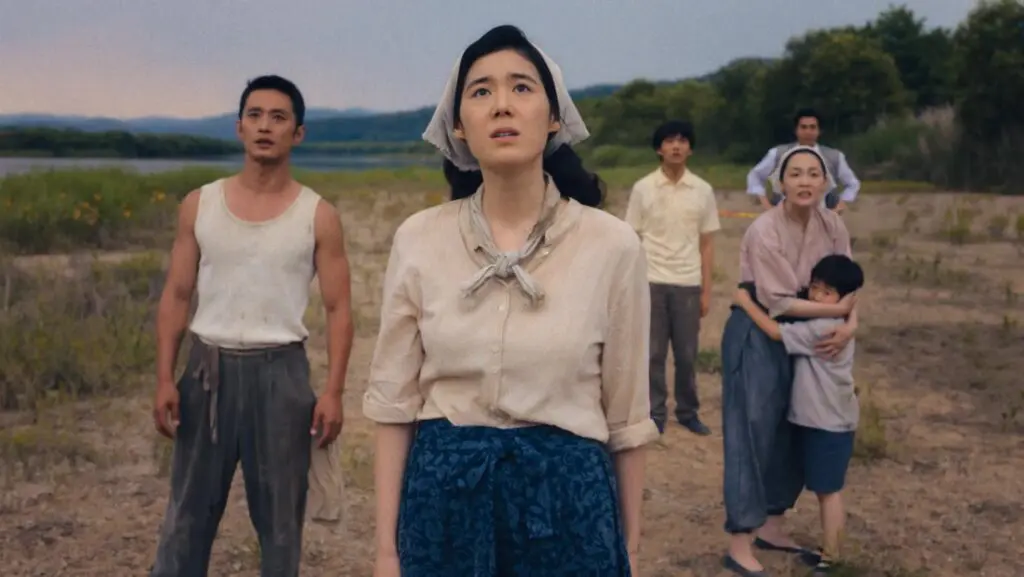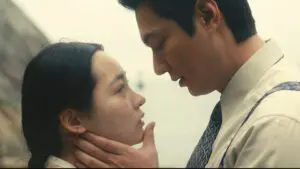Summary
Pachinko Season 2 gets off to a masterful start in a premiere that reminds viewers why this show was so beloved in the first place. The Apple TV+ drama hasn’t lost a step.
“Chapter Nine” is one of the year’s most assured bits of television. It’s quite remarkable that as early as Episode 1, Pachinko Season 2 has established itself as not just a worthwhile continuation of Apple TV+’s beautiful historical melodrama, but an evolution of it, and a worthy tribute to Min Jin Lee’s 2017 novel even in how expands its scope, fiddles with its continuity, and fills in some of its blanks.
This hour-long premiere is patient, detailed, and rich in themes, subtext, and craft. I hate writing about shows like this – Shogun was the same – because they’re such obvious works of important art that they’re almost impossible to make jokes about. Even a conventional recap of events scarcely seems to suffice, since Pachinko is such a transporting show that you’re unlikely to miss anything anyway.
Think of this, I suppose, like a debrief, or a group therapy session to process the particulars. TV like this isn’t all that common. It should be treated accordingly.
Pachinko Season 2 deploys the same framing gimmick of the first season, alternating between two timelines – the “present day” of 1989 Osaka and the years leading there – and various perspectives. The book, it’s worth mentioning, was chronological. One of the most genius flourishes in this adaptation is that it’s not.
Season 1 got us here by charting the life of Sunja from her birth in Japanese-occupied Korea in 1915, through a romance with Hansu and an unexpected pregnancy, to a marriage of convenience with Christian preacher Isak, which led them to Osaka along with Isak’s brother Yoseb and his wife, Kyunghee.
Koreans living in Japan are flagrantly discriminated against and referred to broadly as Zainichi, which translates to “residing in Japan”. It’s a brutally othering term, and the deep-rooted prejudice inspired by the long-simmering tensions between the two nations is a fundamental part of the show’s texture.

Pachinko | Apple TV+
Season 2 picks up where both halves of the story were left in the Season 1 finale. With the specter of World War II looming large, Hansu has arranged for Sunja and her family – including her eldest son, Noa, fathered by Hansu – to be relatively sheltered in the Japanese countryside. In 1989, meanwhile, Solomon, the son of Sunja’s pachinko parlor-owning son Mozasu, tries to work delicate financial and business deals that are quite obscure in their particulars but speak to a man desperate to eke out his own success after being denied it before.
It isn’t always immediately apparent in Episode 1, but Pachinko Season 2 exists with two large real-world calamities looming over it – the war in the past timeline, and Japan’s late-80s asset price bubble and subsequent crash in the present-day one. It becomes clear early that there are parallels between these two things; between the stories that frequently overlap, mirror, and inform each other in the intervening decades.
But the first episode is focused primarily on scene-setting, establishing the narrative threads to be unraveled by subsequent episodes while painting a rich portrait of strained domesticity, especially in the past sequences. There’s a tension here that comes both from the treatment of Koreans within Japan and the audience’s knowledge of what happens to Japan during the war.
The Season 2 premiere isn’t at a highly dramatic pivot point in either timeline, which is perhaps just as well. The patience and rich detail of this first episode sets the scene beautifully and confidently, picking up right from where things left off with all the reassurances necessary that this continuation will be something rather spectacular.




